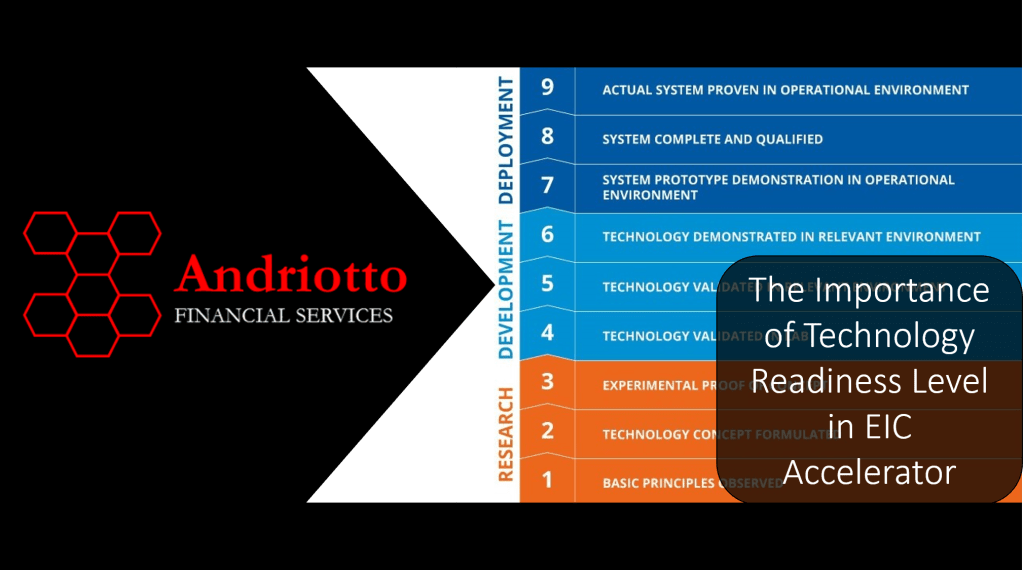EIC Accelerator helps you develop your business concept further into a market-ready product, service or process aligned with your company’s growth strategy. Activities could include trials, prototyping, validation, demonstration and testing in real-world conditions, and market replication. The suitable Technology Readiness Level (TRL) for projects requesting only grants in the EIC Accelerator is 6-8. Projects involving the study of TRL in the EIC Accelerator will receive between €0.5 and €2.5 million in the form of grants. Project completion normally takes 12 to 24 months and largely depends on the TRL and Go-to-Market plan implementation. Since June 2019 the EIC Accelerator offers blended finance for SMEs through an optional equity investment in addition to the grant. While grants can fund TRL 6-8, the equity investment (up to €15 million) can support TRL 9.
What Does TRL Mean?
TRLs measure technology maturity. TRLs provide consistent understanding of development. Engineers and economists use TRLs to track evolution.
What Do TRLs Measure?
Originally developed by NASA in the 1970s for space exploration technologies, TRLs measure the maturity level of a technology throughout its research, development and deployment progression. TRLs are based on a scale from 1 to 9, with 9 being the most mature technology.
Therefore, Technology Readiness Levels (TRL) are a method of estimating technology maturity of Critical Technology Elements (CTE) of a program during the acquisition process. They are usually determined during a Technology Readiness Assessment (TRA) that examines program concepts, technology requirements, and demonstrated technology capabilities. AFS performs informal, yet deep and thorough assessment in pre-evaluation phase of onboarding of projects. The use of TRLs enables consistent, uniform, discussions of technical maturity across different types of technologies. Decision makers both public and private often consider the recommended TRLs when assessing a project risk. So do the VCs, the institutional investors and most HNWI and Family investment offices.
Many organisations have implemented TRLs for their own purposes, with certain organisations, such as the European Union (EU), further normalising the NASA readiness-level definitions, allowing for easier translation to multiple industry sectors.
The EU defines the nine levels as follows:
Referencing Technology Readiness Levels
Organizations systematically reference TRLs, allowing technology to evolve from conception through research, development, and deployment. Universities, along with government funding sources, focus on TRLs 1-4, while the private sector focuses on TRLs 7-9.
The term ‘Valley of Death’ shows neglect of TRLs 4-7. As a result, promising technologies end before use. Horizon Programme’s Accelerator offsets this.
To bridge the valley of death, collaborative efforts are often required. Andriotto Financial Services has a long history of working with its Members and academia, across a range of industry sectors, to fulfil this need. It also works with SMEs and under the framework of EIC to help innovation evolve to marketable product or service. This is also helped by the fact that Mauro Andriotto is a member of the valuation experts used by EIC to assess projects that apply under the programme.
You can find out more about TRL here.
At AFS, we are passionate about fostering innovation and empowering ambitious minds to flourish. Our mission is to provide best-in-class financial services for traditional and crypto deals, exploit European grants, and use quantitative methods to improve clients’ performance. We aim to help our customers unlock their full business potential.
Are you looking to fund your next venture or unlock grant opportunities?
Contact us at [email protected]!



